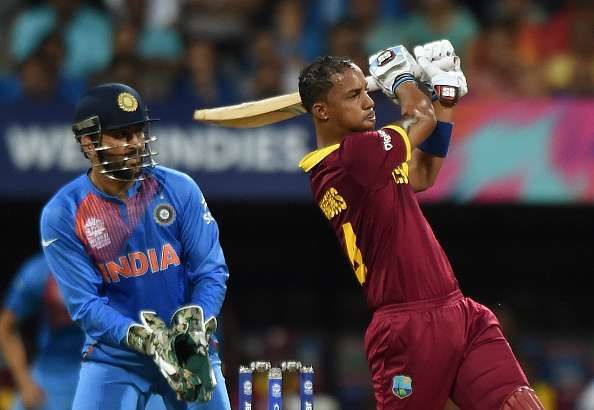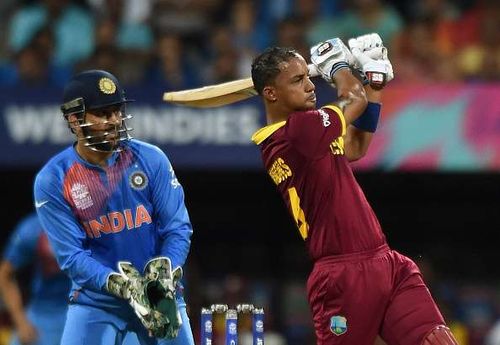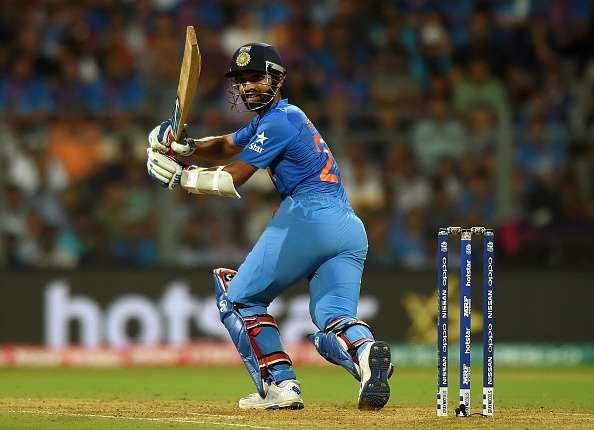
Stop blaming Rahane; there were much bigger factors that caused India’s defeat to West Indies

The blame game has been going on in full force ever since India lost the World T20 semifinal to West Indies, with a variety of factors being held responsible for the failure of Dhoni's men to get to the final. But was it really the poor performance of any one player that was the cause of the defeat? I don't think so.
For one thing, Lendl Simmons was brilliant; he paced his innings perfectly, and never allowed the Indian bowlers to settle. Moreover, the decision to play him despite the fact that he was making a comeback from injury and that he had just flown in from the Caribbean was a masterstroke by captain Darren Sammy.
But aside from that, there were some alarming deficiencies on the part of India’s team management that led to the defeat.
The bowlers were not accustomed to playing under pressure
The last few months have seen our bowlers put in one stellar performance after another, belying the traditional belief that batting is the team's strength. But what has been ignored is that they have largely been bowling on friendly pitches, offering either swing or spin in spades.
Even in this tournament, the Indian team was presented with a rank turner in Nagpur, a two-paced wicket in Kolkata and an uncharacteristically sluggish pitch in Bangalore. Moreover, Dhoni had the good fortune of chasing in three out of the four Super 10 games, which meant that the bowlers always had the luxury of depending on the batsmen to finish the game.
There was always Virat Kohli to bank on, even if the first innings went horribly awry.
In a way, that gave us all a false impression of India's bowling attack. They had somehow escaped the challenge of bowling on a flat wicket, and their neat returns led us to believe that there was nothing to worry about in the bowling department.
All that changed in the semifinal against West Indies. Not only were the bowlers under pressure of defending a total, they had to do it on a pitch that was offering absolutely no assistance.
Under pressure, on a flat wicket, with the dew factor compounding the problems, the bowlers imploded. They didn't have any clear strategy of how to deal with a power-packed batting lineup, and more importantly, they failed to maintain their discipline.
Ashish Nehra was quite impressive, and Jasprit Bumrah wasn't bad either. In fact, I had predicted before West Indies' innings began that it was Bumrah, rather than Ashwin, who was most likely to get Chris Gayle out – and Bumrah duly delivered.
Everyone's talking about Ashwin vs Gayle. But I'm backing Bumrah's slingy action to get the big fish - just like in the practice game. #WT20
— Mohammad Kaif (@KaifSays) March 31, 2016
But the rest of the bowling attack, unfortunately, wasn't up to scratch.
A lot has been said about the two no-balls that allowed Lendl Simmons to stay at the crease, and I don't think I need to add anything more about how criminal that was. What is equally disappointing, however, is how little thought went into the bowling overall.
Why was Ravindra Jadeja bowling an outside-off line throughout the match? The man who was given preference ahead of Ashwin to bowl his full quota of overs has no business being so conservative with his approach. In today’s day and age, you can’t win matches by being defensive.
Jadeja has been in the side for a while now, and it’s still not easy to trust him with the ball in a big over. If the choice is between him and Ashwin, I’d always go for Ashwin – simply because Ashwin is more attacking, and his variations are designed to get the batsman out rather than stop the flow of runs.
That point was reinforced painfully when Jadeja bowled to a 5-4 field in the 19th over. He should have been targeting the stumps and trying to get a wicket; "You miss, I hit" should have been his mantra. Instead, he opted for a defensive approach, inviting the batsman to pierce the offside field.
Even a part-timer can do that; you don't need a frontline spinner like Jadeja to be thinking like that in a high-pressure chase. Clearly, something was off in the Indian think-tank's tactics.
Where was the leg-spinner when you needed him? Where was the variation?
At the start of the tournament I had said that India may have missed a trick by not picking a leg-spinner in the side. As it turns out, that misstep came back to haunt India in the knockout stage, where the lack of variation in the bowling attack hurt their chances big time.
As I had said earlier, a leg-spinner doesn't usually need a helpful track to make a difference. Just take a look at Samuel Badree's spell for West Indies – he gave away just 26 runs in his quota of four overs, which was a tremendous return on a pitch like the Wankhede. He even got the wicket of Rohit Sharma who was looking good for a big one, and that may well have been the difference between a 220-odd score and 192.
The variation that a leg-spinner brings can never be overstated. The fact that a wrist spinner can put doubts in the batsman's mind with his bag of tricks – the googly, the flipper, the slider – can always be exploited to stem the flow of runs. A leggie doesn't even need to turn the ball sharply to contain runs or break a partnership; the mere difference in angle and trajectory is often enough to get the better of the batsman.
To make matters worse for India, Yuvraj Singh wasn't playing in the match either. He may not have been faring too well with the bat lately, but his part-time spin is invaluable – especially with two right-handers at the crease.
Dhoni didn't have enough faith in Suresh Raina to contain two right-handers, and rightly so; an off-spinner always runs the risk of being hammered by an in-form big hitter. That meant Hardik Pandya had to bowl four overs, and Kohli had to bowl two – including the all-important last one.
Why Ravichandran Ashwin wasn't given his full quota of overs is something that I cannot comprehend. Sure he gave away 20 runs in his first two overs, but on a flat pitch, that wasn't entirely unforgivable.
Dhoni failed to trust Ashwin, despite the latter having proven on numerous occasions that he can deal with tricky conditions and power players. And without Ashwin's services, the skipper was forced to bowl out Ashish Nehra and Jasprit Bumrah early, leaving Jadeja and Kohli to bowl the last two overs.
Out of India’s five frontline bowlers, Nehra was making a comeback, Bumrah and Pandya were new to the experience of a World Cup semifinal (and also to the prospect of bowling against a power-packed lineup like the West Indies’), Jadeja was being too defensive and Ashwin wasn’t shown enough faith. It’s a no-brainer that the attack as a whole was exposed in the worst possible way.
How different would things have been if there was a leg-spinner in the team? Hindsight is 20/20, but I can't help but feel that India made major selection blunders and showed tremendous lack of foresight in the lead-up to the tournament.
We shouldn't blame Ajinkya Rahane; he was only doing his job

There has been a lot of criticism over Ajinkya Rahane's performance in the semifinal, but I don't think any of it is justified. It's easy to play the blame game, but what most people don't realize is that Rahane was in the side to perform a specific task: ensure that India got off to a solid start.
And a solid start he did provide, in company with the free-scoring Rohit. Rahane managed to remain at the crease till the 16th over, giving Kohli adequate support and running hard between the wickets.
The only mistake that Rahane made was that he got out at the wrong time. He had set up the platform to launch an attack at the death, the way he's done frequently for Rajasthan Royals in the IPL. He may not have scored very quickly at the start, but he was in a position to make up for that with some big hits at the end.
No one must be angrier than Rahane himself that he got out when he did. But at least he put himself in a situation from where he could shift gears; at least he lasted that long. Shikhar Dhawan hadn't done that even once in the tournament, so I fail to see how he would've been more helpful to India than Rahane, as some people are claiming.
The fault wasn't with the batting at the Wankhede; it was with the bowling. The top order had failed so badly before this match that everyone's attention, including Dhoni's, was focused on how to improve the batting. When Yuvraj was ruled out, all anybody could think of was how to shore up the middle order in his absence.
What everyone forgot was that the bowling hadn't been tested adequately, and that Ashwin & Co. needed someone to support them too. There was no plan to deal with adversity, and the team management was caught napping the moment we were presented with a batting-friendly wicket.
We are quick to blame the batsmen for their failure to perform anywhere except on flat tracks. But why can't our bowlers perform when the ball isn't swinging or spinning?